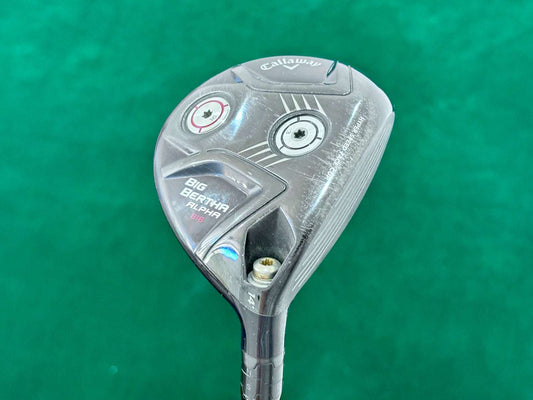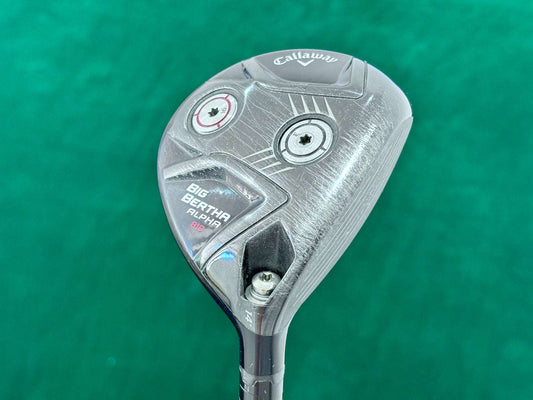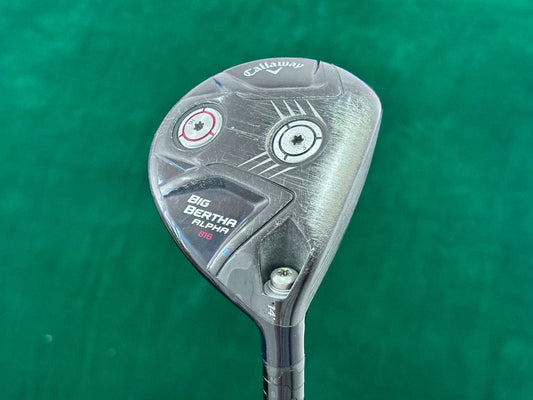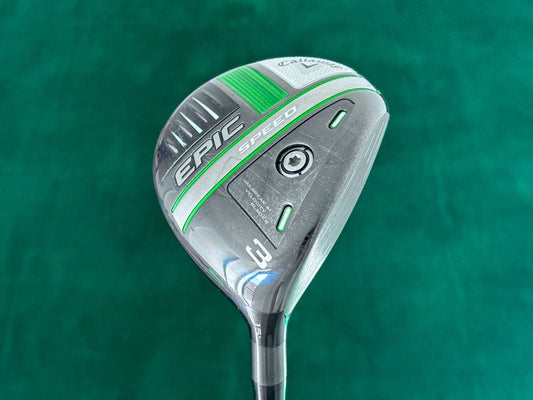The Complete Fairway Wood Buying Guide
Fairway woods are some of the most versatile clubs in your bag — perfect for long shots off the deck, reliable tee shots on tight holes, or even reaching par 5s in two. Choosing the right fairway wood can transform your long game, giving you both confidence and consistency from the fairway or rough.
At ARC Golf, we know that finding the perfect fairway wood can be tricky. Between different head sizes, lofts, shaft types, and materials, it’s easy to feel overwhelmed. That’s why we’ve created this guide — to help you understand what makes one fairway wood different from another and how to choose the best one for your game.
What Is a Fairway Wood?
Despite the name, modern fairway woods are made from high-tech metals, not wood. They sit between your driver and long irons in terms of loft and length, offering a balance of distance and playability.
Fairway woods typically come in 3-, 5-, 7-, and 9-wood options, though many golfers carry just one or two that fit their distance gaps. The 3-wood is the most common often used from the tee when accuracy is key — while higher-lofted woods (like 5- and 7-woods) help get the ball airborne more easily from the turf.
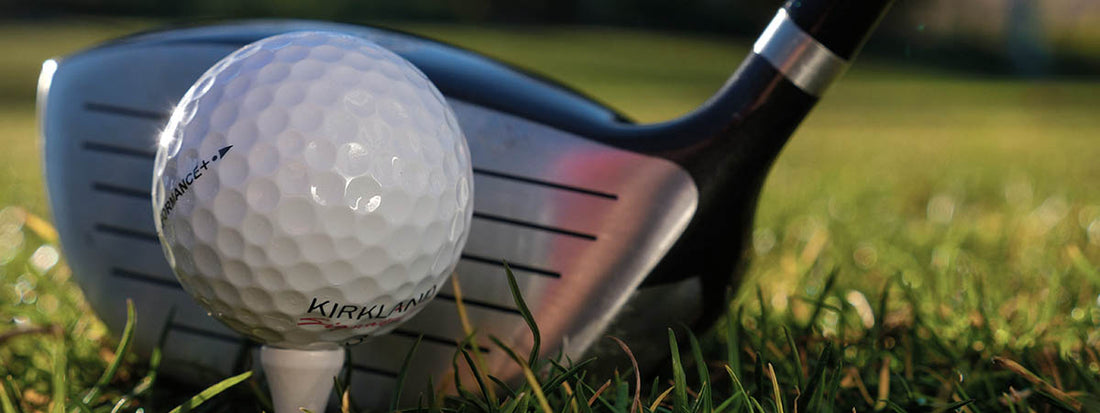
Loft, Distance, and Trajectory
The loft of a fairway wood directly affects launch angle and distance:
3-wood: Around 13°–15°, ideal for distance off the tee or fairway.
5-wood: Around 17°–19°, easier to launch and forgiving from tight lies.
7-wood: Around 21°–23°, higher launch and softer landings for approach shots.
9-wood: Around 24°–26°, great for golfers who prefer height and control over raw distance.
If your driver is inconsistent or too long for certain holes, a 3-wood can make an excellent backup option. Players who struggle to hit long irons may also benefit from replacing them with higher-lofted woods or hybrids.
Understanding Each Type of Fairway Wood
Each fairway wood serves a different purpose in your bag. Here’s how they differ — and which type might suit your game best.
3-Wood: Distance and Versatility
The 3-wood is your go-to for long, powerful shots when accuracy matters more than maximum distance. With a loft between 13° and 15°, it’s designed to deliver strong, penetrating ball flights from both the tee and fairway.
Ideal for: golfers who want a reliable alternative to their driver.
Best used: off the tee on tight par 4s or for reaching par 5s in two.
Tip: look for models with a slightly larger head if you plan to use it mainly from the tee.
5-Wood: Forgiveness Meets Launch
The 5-wood sits comfortably between the 3-wood and long irons. Its 17°–19° loft helps get the ball airborne more easily, making it one of the most forgiving woods in the bag.
Ideal for: players who struggle to hit their 3-wood cleanly from the turf.
Best used: from the fairway or light rough, especially for long approach shots.
Tip: a great club to replace a 2- or 3-iron if you prefer a higher launch.
7-Wood: Confidence From Any Lie
The 7-wood has become increasingly popular among both amateurs and professionals. With lofts around 21°–23°, it launches high and lands soft, offering excellent control from all lies — even thick rough.
Ideal for: golfers who prefer easy launch and high trajectory.
Best used: for long approaches where you need height and stopping power.
Tip: perfect for players who find hybrids inconsistent or hard to square up.
9-Wood: High Launch and Precision
The 9-wood is designed for golfers seeking maximum height, control, and forgiveness. With a loft around 24°–26°, it’s often used to replace 4- or 5-irons, delivering easier contact and a softer landing on the green.
Ideal for: slower swing speeds or anyone looking for consistency on longer approach shots.
Best used: for attacking pins or getting out of the rough with confidence.
Tip: pair your 9-wood with a mid-to-high lofted hybrid for a smooth gap transition.
Forgiveness and Head Design
Modern fairway woods have benefited hugely from advances in design and materials. Most brands now use multi-material constructions, combining carbon, titanium, and steel to fine-tune forgiveness and feel.
• Larger heads (170cc+) provide a bigger sweet spot and more stability on off-centre strikes — ideal for mid- and high-handicap players.
• Compact “tour” heads offer more control and workability, suited to golfers who like shaping their shots.
Weight placement plays a big role in how forgiving a club feels. By positioning weight low and back in the head, manufacturers make it easier to launch the ball high with less spin — perfect for getting the ball up quickly from the turf.
If you tend to top your fairway shots, look for a club with a shallow face and low centre of gravity, which helps you get the ball airborne with less effort.
Shaft Length and Flex
Shaft length in fairway woods typically ranges from 42 to 43.5 inches, shorter than a driver but longer than a hybrid. A longer shaft can increase distance, but shorter shafts tend to offer more control — especially off the deck.
Choosing the right shaft flex is also critical for consistency and feel:
Regular (R): Best for moderate swing speeds (85–95 mph).
Stiff (S): Suited to faster swings (95+ mph).
Senior (A or M): Great for smooth, slower tempos.
Ladies (L): Lightweight and flexible for higher launch.
Most fairway woods come fitted with graphite shafts, which promote faster swing speeds and easier launch.
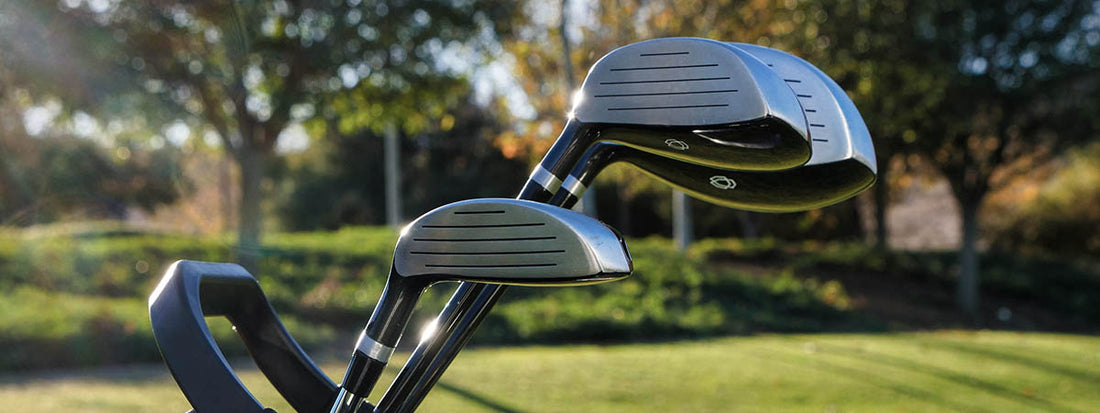
Adjustability Features
Fairway woods have come a long way in terms of customisation. Many now feature adjustable hosels and movable weights, allowing you to fine-tune loft, face angle, and ball flight.
Loft adjustment: Typically ±1–2°, helping you control launch and spin.
Face angle: Can be opened or closed to counter fades or draws.
Movable weights: Change the club’s balance, encouraging different shot shapes.
These options make modern fairway woods incredibly versatile, you can effectively tune one club to perform like several.
When Should You Upgrade?
If your current fairway wood is more than 4–5 years old, you might be missing out on key advances in forgiveness, distance, and adjustability.
Modern models deliver faster ball speeds and more consistent launch, especially on off-centre hits. You may also benefit from updated shaft technology — lighter, more stable shafts can make a big difference in control and dispersion.
If you find your fairway wood hard to launch or inconsistent in distance, it’s worth exploring newer models.
How Much Should You Spend?
Fairway woods vary widely in price, depending on age, brand, and materials.
At ARC Golf, we stock a broad range of pre-owned fairway woods, all carefully verified for authenticity and quality. Whether you’re looking for a tour-level titanium 3-wood or a forgiving 7-wood for everyday play, we’ve got you covered.
You can typically find a high-quality second-hand fairway wood between $120 and $300, offering premium performance without the brand-new price tag.
Our Range of Fairway Woods
-
Callaway BIG BERTHA ALPHA 816 14° - Fairway Wood (Stiff)
Regular price $199.00 NZDRegular priceUnit price / per$0.00 NZDSale price $199.00 NZD -
Callaway BIG BERTHA ALPHA 816 14° - Fairway Wood (Stiff)
Regular price $199.00 NZDRegular priceUnit price / per$0.00 NZDSale price $199.00 NZD -
Callaway BIG BERTHA ALPHA 816 14° - Fairway Wood (Stiff)
Regular price $199.00 NZDRegular priceUnit price / per$0.00 NZDSale price $199.00 NZD -
Callaway EPIC SPEED 3W - Fairway Wood (Stiff Regular)
Regular price $269.00 NZDRegular priceUnit price / per$0.00 NZDSale price $269.00 NZD
Elevate Your Game with ARC Golf
A good fairway wood can be a real game-changer giving you options off the tee, the fairway, and even the rough. The key is finding one that feels right for your swing and fills the right gap in your set.
At ARC Golf, we make it easy to shop with confidence. Every club we sell is fully inspected and ready to play, with fast nationwide shipping and free delivery over $250.
If you’re still not sure which model is right for you, our team is always happy to help you find a fairway wood that matches your needs and budget.
